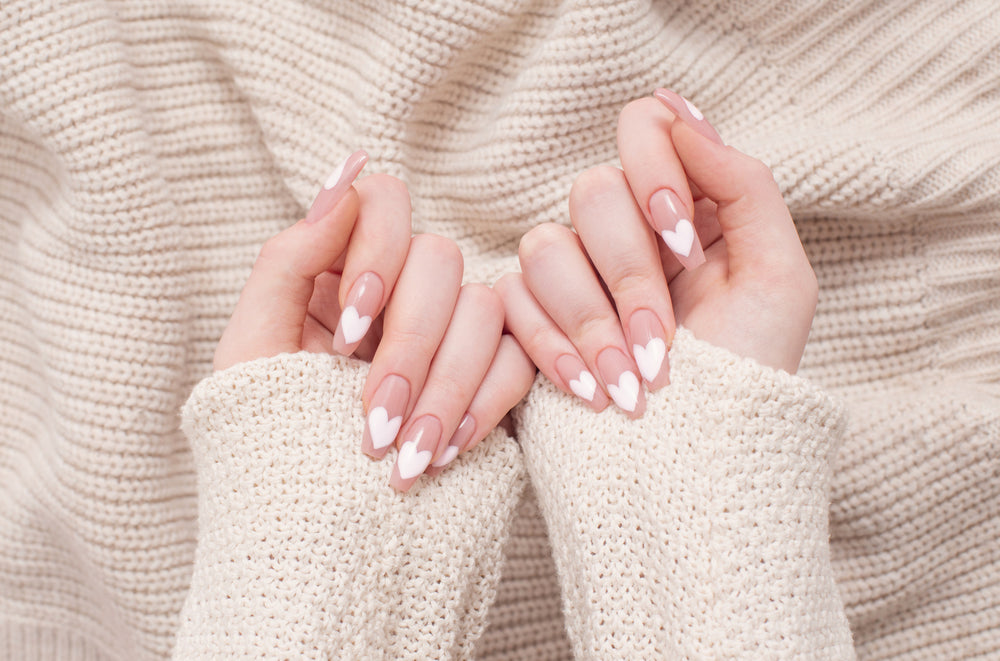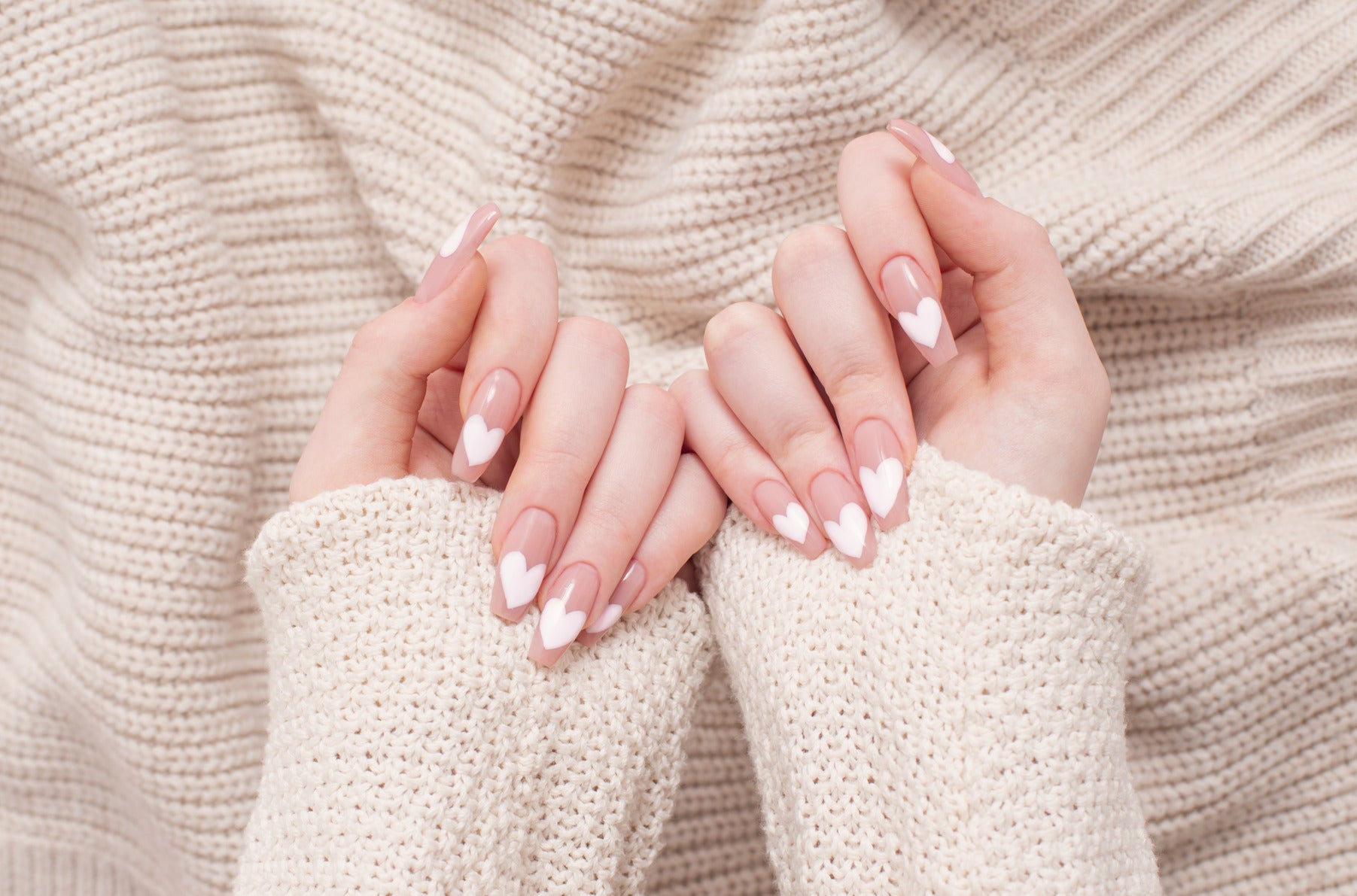Comparing Gel and Regular Nail Polishes
In the world of nail care, the choice between gel and regular nail polish can be a game-changer. Both have their unique attributes and challenges.
Gel nail polish, known for its durability and glossy finish, has become a salon favourite. It requires a specific application process, including curing under a UV or LED lamp.
On the other hand, regular nail polish, with its ease of application and removal, remains a staple in at-home manicures. It air-dries naturally and offers the flexibility of quick colour changes.
But how do these two types of polishes truly compare? What are the pros and cons of each? And most importantly, how can aspiring nail technicians master the techniques of working with both?
This comprehensive guide aims to answer these questions. It will delve into the definitions, compositions, application processes, and aesthetic outcomes of both gel and regular nail polishes.
We'll also explore the health and safety considerations, cost implications, and skill development necessary for each type.
Whether you're an aspiring nail technician or simply a nail care enthusiast, this guide will provide you with the knowledge you need to make informed decisions about gel and regular nail polishes. Let's dive in.
Understanding Gel Nail Polish
Gel nail polish has emerged as a favourite in the nail care industry, especially for its long-lasting results. Unlike traditional polishes, it offers a high-gloss finish that withstands daily wear and tear. This makes it an appealing option for those desiring a professional and chic appearance.
The unique formulation of gel polish is what truly sets it apart. It uses a polymer-based ingredient that requires a specific curing process. This ensures a durable and resilient finish that regular polishes often cannot match.
Despite its benefits, gel polish is not without its challenges. The application and removal processes are more complex, requiring specific tools and techniques. Understanding these nuances is crucial for aspiring nail technicians aiming to provide high-quality services.
Definition and Composition
Gel nail polish is a special blend designed to offer toughness and brilliance. It consists primarily of methacrylate compounds, which provide the polish with its gel-like consistency.
This chemistry enables the polish to bond securely to the nail surface. During curing, the polymers harden to create a chip-resistant layer. This distinguishes it from regular polish, which relies on evaporative drying.
It's this distinctive composition that necessitates the use of UV or LED light for setting. The ingredients react to light, curing and hardening into a durable finish. This process gives gel polish its superior longevity and vibrant gloss.
Application Process
Applying gel nail polish involves several precise steps to achieve optimal results. To start, nails are prepped by cleaning and gently buffing the surface. This preparation ensures better adhesion of the gel polish.
Next, a base coat is applied to protect the nail and promote smooth adhesion. After the base coat is cured, colour coats follow. Each layer must be cured under UV or LED lamp before applying the next.
Finally, a top coat is applied for extra shine and protection. This finishing layer also needs curing to complete the manicure. The result is a shiny, long-lasting polish that's ready to withstand everyday activities.
Curing Time and Equipment
Curing gel polish is a critical step that requires the right equipment. UV and LED lamps are used to set the gel polish, creating a hard, glossy finish. The lamp's light triggers a chemical reaction that hardens the polymers in the polish.
Curing time can vary based on the equipment and polish type. Typically, LED lamps offer faster curing times, often within 30 seconds to one minute. UV lamps might take longer, up to two minutes per coat.
Investing in a quality lamp is essential for achieving consistent, professional results. It's also vital to ensure proper usage to avoid over-curing, which can cause brittleness. Each step must be carefully executed to master the art of gel polish application.
Understanding Regular Nail Polish
Regular nail polish is a timeless classic beloved for its ease of use and versatility. This form of polish dries by evaporation, which makes it accessible and user-friendly. It's ideal for quick colour changes and experimenting with trends.
This type of polish provides a broad range of colours, finishes, and textures. Options include matte, glossy, metallic, and glitter finishes. This variety allows for endless creativity in manicures.
The approach to applying regular polish is straightforward, making it ideal for home applications. However, achieving a professional finish requires practice and precision. This is particularly true in achieving streak-free, vibrant coverage.
Yet, the downside lies in its susceptibility to chips and wear. Without a proper top coat, regular polish can show signs of wear after just a few days. This affects its longevity compared to gel alternatives.
Nonetheless, regular polish remains a mainstay due to its accessibility. With no need for special equipment, it can be used anywhere, anytime, for a quick spruce-up.
Definition and Composition
Regular nail polish is composed mainly of nitrocellulose, solvents, and plasticisers. These ingredients give the polish its liquid form, allowing smooth application. As it dries, solvents evaporate, leaving behind the colour film.
This traditional formula is balanced to ensure a quick drying process while maintaining vibrant colour. Unlike gel polish, no curing lamp is required. Air-drying through evaporation is sufficient for regular polish.
Furthermore, regular polishes often incorporate pigments and dyes to achieve a wide spectrum of colours. Additives like mica and glitter enhance shine and texture, offering varied aesthetic options. This combination results in the rich, diverse palette available to consumers.
Application Process
Applying regular nail polish is fairly straightforward. Start by prepping the nails to remove oils and old residue. This ensures better adherence of the new polish.
A base coat is crucial to protect the nail and provide a smooth surface. Once dry, apply the polish, usually in two coats for full coverage. Thin layers minimise streaks and enable quicker drying.
Finishing with a top coat is essential for added shine and longevity. This step seals the colour and helps resist chips and fading. When done properly, it enhances the overall look of the manicure.
Drying Time
Drying time for regular polish largely depends on environmental conditions and application thickness. Warm, dry air generally speeds up the drying process. On average, each coat can take a few minutes to dry to the touch.
However, full hardness, known as curing, can take up to an hour. This means the polish can be dented or smudged if not handled carefully. Using drying aids like sprays or drops can expedite this process.
For optimal results, patience is key. Allow each layer ample time to dry before applying the next. This helps in achieving a smooth, even finish without imperfections.
Gel vs Regular: Durability and Aesthetics
When it comes to nail polish, durability and aesthetics are crucial factors. Both gel and regular polishes offer distinct advantages and cater to different needs and preferences. Understanding these differences helps in making informed choices.
Gel nail polish is well-known for its resilience. It can withstand chips and cracks far longer than regular polish, providing a flawless look for weeks. This durability is ideal for individuals seeking long-lasting manicures without frequent touch-ups.
Regular polish, however, is more prone to chipping and peeling. While its initial shine is comparable, it tends to fade faster than gel polish. Regular polish is excellent for those who prefer changing colours frequently.
Aesthetically, gel polish often offers superior glossiness that endures throughout its wear. This glossy finish adds a professional touch, elevating the overall appearance. Meanwhile, regular polish can range from matte to shimmer, giving a broad spectrum of looks.
Ultimately, the choice between gel and regular polish depends on lifestyle needs. For long-lasting, low-maintenance results, gel polish is the winner. For quick and varied colour changes, regular polish remains unbeatable.
Longevity of Wear
Gel nail polish is famed for its extended wear. When applied correctly, it can last up to three weeks without significant wear. This makes it a preferred choice for individuals with busy lifestyles.
The secret to gel polish's durability lies in its curing process. Using UV or LED lamps ensures a hard, resistant surface. This method dramatically reduces the likelihood of chips and peeling.
In contrast, regular polish generally lasts a week at best with careful upkeep. Exposure to water and physical activity shortens its lifespan. Regular polish requires frequent touch-ups and reapplications to maintain its appearance.
Thus, for events or holidays, gel polish offers peace of mind with its sturdiness. Regular polish is ideal for everyday versatility, allowing spontaneous colour shifts as desired.
Aesthetic Differences
Aesthetically, gel polish typically outshines regular polish in terms of gloss and smoothness. Its unique formula and curing process create a high-gloss finish that's difficult for air-dried regular polish to match.
While regular polish also offers a variety of gloss levels, it may lack the rich shine of gel. However, it excels in versatility, with options like matte, shimmer, and special effect finishes.
Another aesthetic element is colour vibrancy. Gel polish often provides more vivid hues that stay true longer. Regular polish, though vibrant, may lose intensity quicker due to environmental factors.
Ultimately, both polish types allow personal expression through colour and finish choices. Those seeking a salon-quality look often lean towards gel. Meanwhile, regular polish caters well to those favouring frequent and varied style shifts.
Removal Techniques
Removing nail polish demands precision and care, especially when dealing with gel polish. Each type requires a distinct approach to ensure nails remain healthy and intact. The method used is as important as the application itself.
Gel Polish Removal
Gel nail polish removal involves a more detailed process than regular polish. It's crucial to understand that improper removal can damage the natural nails. To start, the top layer of the gel polish is filed gently to break the seal.
Next, cotton balls soaked in acetone are applied to the nails. Wrapping each fingertip with aluminum foil secures the cotton in place. This setup must be left for about 15 minutes to allow the acetone to penetrate.
Once the soaking is complete, the gel should peel off smoothly with the help of a cuticle pusher. If stubborn spots remain, repeat the soaking process rather than forcefully scraping. Gentle removal is key to preventing damage.
Regular Polish Removal
Regular nail polish, conversely, offers a simpler removal process. A basic non-acetone remover and cotton pads suffice for this task. Begin by saturating the cotton pad with remover, then press it onto the nail for a few seconds.
This brief pause allows the remover to dissolve the polish effectively. As you swipe the pad towards the tip, most of the polish should come away cleanly. For stubborn bits, additional remover and a gentle rubbing motion may be needed.
It's essential to practice patience and gentleness, even with regular polish, to avoid nail dryness or weakening. After removal, washing hands thoroughly and applying a hydrating nail oil helps restore moisture and maintain nail health.
Health and Safety Considerations
Health and safety play pivotal roles in nail care, ensuring both technicians and clients remain safe. Proper practices protect skin, nails, and overall health. Awareness of potential risks associated with both gel and regular nail polishes is crucial.
One significant concern with gel nail polish is UV exposure during curing. While essential for drying, these lamps emit UV rays. Prolonged exposure might pose risks similar to those of sun exposure without protection.
Additionally, chemicals in nail products can lead to allergic reactions. It's vital to know the ingredients in the polishes you use. Ventilation plays a critical role here, as inhaling fumes from both gel and regular polish can be harmful.
UV Exposure and Nail Health
UV exposure from nail lamps is comparable to sun exposure. Though the doses are smaller, repeated exposure accumulates over time. To mitigate risk, some professionals suggest using fingerless gloves during curing.
Applying a broad-spectrum sunscreen to hands before application can also reduce UV impact. This practice protects skin without sacrificing the quality of the gel manicure. Moreover, opting for LED lamps, which emit lower UV levels, can reduce concerns.
Nail health can also be affected by polish removal and improper techniques. Regular care, including moisturising cuticles and ensuring breaks between applications, maintains nail strength. Gel polish can shield nails but requires mindful handling.
Allergic Reactions and Ventilation
Certain ingredients in gel polishes might trigger allergic reactions in sensitive individuals. Common culprits include acrylates and other resins used in formulations. A patch test before extensive use can help identify adverse reactions early.
Ventilation is critical in nail salons and at home. Ensuring good airflow reduces inhalation of fumes, protecting both nail technicians and clients. Fans, open windows, or specialised air filters can enhance safety in workspaces.
Being attentive to signs of allergies or irritation, like redness or itching, helps catch issues early. Prompt action, such as removing the product and consulting a dermatologist, can prevent escalation. Always prioritise health alongside achieving a beautiful manicure.
Cost and Accessibility
The cost and accessibility of nail polish options are crucial factors for both consumers and nail technicians. Understanding these can help in choosing the right products and services.
Professional gel polish services generally come at a higher price than regular manicures. This premium often reflects the specialised equipment, such as curing lamps, and the additional time required for the process.
Accessibility varies with the availability of products. Regular polishes are widely available, easy to use, and require no additional tools. Meanwhile, gel polishes often need specific tools and expertise.
For aspiring nail technicians, investing in learning materials and equipment is essential. Training can enable them to offer both services professionally. Evaluating costs and potential returns can guide investment decisions effectively.
Professional Services vs At-Home Kits
Professional services for gel manicures typically ensure a high-quality finish, thanks to skilled technicians and professional-grade tools. However, this quality comes with a higher price point. Salon visits include the cost of expertise and top-tier products.
At-home kits offer an affordable alternative but require a learning curve. These kits often contain a UV or LED lamp, ensuring effective curing of gel polish. However, achieving salon-like results takes practice and attention to detail.
For those new to nail care, starting with regular polish might be more straightforward. These products don't require specialised tools or curing lamps, making them more accessible and user-friendly for home use.
Equipment and Product Investment
Investing in nail care equipment is a significant consideration for aspiring technicians. Gel polish services, in particular, demand specific tools, including curing lamps and gel products. This initial investment can be substantial but necessary for professional service.
For regular polish, the investment is lower, focusing mainly on quality polishes and standard manicure tools. Offering a variety of colours and finishes can enhance service appeal without excessive costs.
Choosing the right equipment affects service quality and client satisfaction. Quality items often last longer and perform better, justifying the expense. Strategic investment in essential tools can boost service offerings and client experience effectively.
Skill Development and Training for Nail Technicians
Developing skills in nail care is vital for aspiring technicians. Both gel and regular polishes present unique challenges and opportunities.
Training courses and workshops offer structured learning. They cover techniques, safety protocols, and product knowledge, laying a strong foundation.
Practicing consistently can build proficiency and confidence. Experimenting with different designs and techniques helps refine skills.
Participating in online forums and communities is beneficial. These platforms enable technicians to share experiences and gain tips from peers.
Feedback from mentors and clients is invaluable. Constructive criticism helps identify areas for improvement, pushing skill levels higher.
Keeping up with industry trends is also important. Regular learning ensures technicians stay competitive and provide in-demand services.
Mastering Gel Polish Techniques
Mastering gel polish involves understanding its properties and process. Training focuses on proper application and curing methods, essential for durability.
Careful nail preparation is the first step. This includes cleaning, shaping, and using a base coat to ensure adhesion.
Learning to cure gel polish with UV or LED lamps is critical. It's vital to follow specific timing to prevent smudges and ensure a solid finish.
Removal skills are equally important. Proper methods include soaking and gentle filing to minimise damage and maintain nail health.
Practicing creative nail art with gel polish can elevate offerings. Techniques like layering and 3D designs expand artistic possibilities.
Understanding the chemistry behind gel products can improve service quality. Knowledge aids in troubleshooting and selecting compatible products.
Mastering Regular Polish Techniques
Regular polish offers both simplicity and creative freedom. Mastering its application enhances service offerings in a salon setting.
Selecting high-quality polishes ensures vibrant colour and smooth application. Quality products often deliver better results and client satisfaction.
Practice applying polish in thin, even layers to avoid streaks. Attention to detail, like sealing the free edge, prevents chipping.
Experiment with various finishes and textures to create unique looks. Regular polish allows easy customisation and quick colour changes.
Correct nail prep supports longevity. Using a base coat prevents staining, while a top coat adds gloss and protects against wear.
Efficiency in application can improve service turnover. Swift yet precise techniques maintain quality while serving more clients.
Experimenting with blending colours and creating simple nail art can add value. Continuous creativity keeps services fresh and appealing.
FAQs: Gel Nail Polish vs Regular Polish
With so many options available in nail care, it's common to have questions. Understanding the differences between gel and regular polish can guide your choices.
Both types of polish have their strengths. It's helpful to know how they interact with each other and how to use them correctly.
Taking proper care of your nails, regardless of the polish type, prevents damage and maintains healthy nails. Here, we address some frequent questions.
These insights can help you optimise your manicure routine and make informed decisions about which polish suits your needs best.
Can Regular Polish Be Used Over Gel?
Yes, you can apply regular polish over gel polish. This method allows for flexibility in changing colours without a full removal.
Ensure the gel polish has been cured and is completely dry before applying regular polish. A top coat will seal and protect both layers.
How Often Should Gel Polish Be Reapplied?
Typically, gel polish lasts two to three weeks. Reapply when there is visible growth or chipping.
Timely reapplication avoids potential lifting and peeling, helping to preserve the nails' health and polish appearance.
Is Gel or Regular Polish Better for Nail Art?
Both gel and regular polishes are great for nail art. Gel polish is ideal for detailed designs because of its longer working time before curing.
Regular polish works well for simple designs and can be easily adjusted. Choosing between them depends on the desired complexity and durability of your nail art.
How Can I Prevent Damage to Nails When Using Gel Polish?
Prevention starts with proper removal. Avoid peeling off gel polish; instead, soak and gently file to minimise nail damage.
Maintain nail health by keeping them hydrated. Regular use of cuticle oil and hand cream helps strengthen and nourish the nails and surrounding skin.






